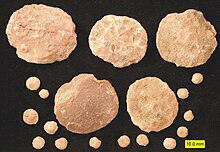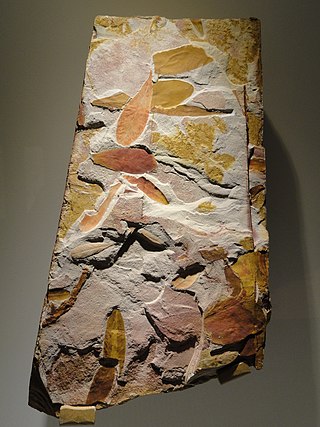
Glossopteris is the largest and best-known genus of the extinct Permian order of seed plants known as Glossopteridales. The name Glossopteris refers only to leaves, within the framework of form genera used in paleobotany.

Birbal Sahni FRS was an Indian paleobotanist who studied the fossils of the Indian subcontinent. He also took an interest in geology and archaeology. He founded what is now the Birbal Sahni Institute of Palaeobotany at Lucknow in 1946. His major contributions were in the study of the fossil plants of India and in plant evolution. He was also involved in the establishment of Indian science education and served as the president of the National Academy of Sciences, India and as an honorary president of the International Botanical Congress, Stockholm.
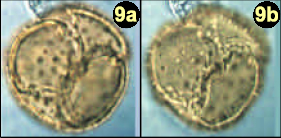
Droseridites is a genus of extinct plants of possible droseracean or nepenthacean affinity. It is a form taxon known only from fossil pollen. Species assigned to this genus originate from numerous regions of the world, including Europe, India, Egypt, the Arabian Peninsula, and the Kerguelen Islands.
Droserapollis is a genus of extinct plants in the family Droseraceae. It is a form taxon known only from fossil pollen.

William Brian Keith Holmes is an Australian palaeobotanist, best known for his work "Fructifications of Glossopteris" (1974), published in the Proceedings of the Linnean Society of New South Wales. Despite having received no formal training in palaeontology, he has become an important contributor in the field and has described some 80 new species, mostly from 2 quarries at Nymboida in northern New South Wales, and situated on the Triassic.

The Rajmahal Hills are located in the Santhal Pargana division of Jharkhand, India. They were located on the northern margin of the Gondwana supercontinent, and its hills are today inhabited by the Sauria Paharia people whilst its valleys are dominated by the Santhal people. The hills span over an area of 2,600 km2 (1,000 sq mi).

The Department of Science and Technology (DST) is a department within the Ministry of Science and Technology in India. It was established in May 1971 to promote new areas of science and technology and to play the role of a nodal department for organising, coordinating and promoting scientific and technological activities in the country. It gives funds to various approved scientific projects in India. It also supports various researchers in India to attend conferences abroad and to go for experimental works.
Chester Arthur Arnold was an American paleobotanist, born June 25, 1901, in Leeton, Missouri, and died on November 19, 1977.
Pathakhera is a town in the municipal council of Sarni in the Betul District, Madhya Pradesh, India. The town is also known as Coal Nagari and also locally as NCDC, an acronym for National Coal Development Corporation.
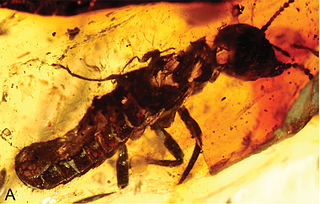
Prostylotermes is an extinct genus of termite in the isopteran family Stylotermitidae known from two Eocene fossils found in India. The genus contains a single described species, Prostylotermes kamboja.
Zophotermes is an extinct genus of termite in the Isoptera family Rhinotermitidae known from two Eocene fossils found in India. The genus contains a single described species, Zophotermes ashoki placed in the subfamily Prorhinotermitinae.
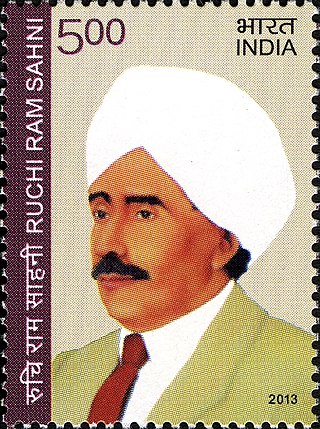
Ruchi Ram Sahni was an Indian scientist and educationist active during the pre-partition era in Punjab. A pioneer meteorologist and physicist, he was the father of renowned paleobotanist Birbal Sahni.
Shyamala "Shya" Chitaley was an Indian American Paleobotanist who had a nearly 60-year career of teaching and research in both the United States and India. She was the founder and first curator of the paleobotany department at the Cleveland Museum of Natural History, winner of the 2010 Botanical Society of America Award for Contributions to Paleobotany, and author of approximately 150 publications.
Toppur Seethapathy Sadasivan was an Indian plant pathologist, academic and the director of the Centre for Advanced Studies in Botany of the University of Madras. He was the founder of the School of Physiological Plant Pathology at Madras University and was a recipient of the Shanti Swarup Bhatnagar Prize, the highest Indian award in the science category. He was an elected fellow of the Indian Academy of Sciences, Indian National Science Academy and Indian Botanical Society and an elected member of the Academy of Sciences Leopoldina. The Government of India awarded him the third highest civilian honour of the Padma Bhushan, in 1974, for his contributions to science.
Sampat Kumar Tandon is an Indian geologist and a professor emeritus of geology at the University of Delhi. He is a former pro-vice chancellor of Delhi University, Sir J. C. Bose Chair Professor of the department of Earth and Environmental Sciences at the Indian Institute of Science Education and Research, Bhopal and a D. N. Wadia Chair Professor of the department of Earth Sciences at the Indian Institute of Technology, Kanpur.
Guntupalli Veera Raghavendra Prasad is an Indian paleontologist and former head of the department of geology at the University of Delhi. He is known for his studies on the Mesozoic vertebrate groups of India and is an elected fellow of all the three major Indian science academies viz. Indian Academy of Sciences, Indian National Science Academy and the National Academy of Sciences, India as well as The World Academy of Sciences. The Council of Scientific and Industrial Research, the apex agency of the Government of India for scientific research, awarded him the Shanti Swarup Bhatnagar Prize for Science and Technology, one of the highest Indian science awards for his contributions to Earth, Atmosphere, Ocean and Planetary Sciences in 2003.
Vishnu-Mittre or Vishnu Mittre was an Indian paleobotanist who worked at the Birbal Sahni Institute and wrote numerous influential papers and popular books on earth history, particularly with reference to the Indian region. He worked along with archaeologists in pioneering studies of agricultural crops in early human settlements on the Indian Subcontinent.

Savitri Sahni, born Savitri Suri, was president of the Birbal Sahni Institute of Paleosciences from 1949 to 1969.
Rajendra Nath Lakhanpal was an Indian paleobotanist. He was a specialist on palaeo-ecology and the identification of plants from pollen microfossils.
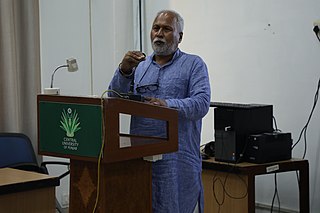
Raghavendra P. Tiwari is the Vice Chancellor of Central University of Punjab, Bathinda. He has also served as the Vice-Chancellor in Dr. Hari Singh Gour University, Sagar M.P.






